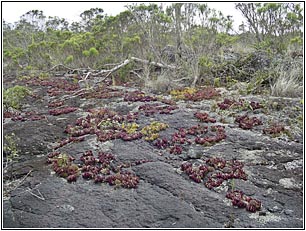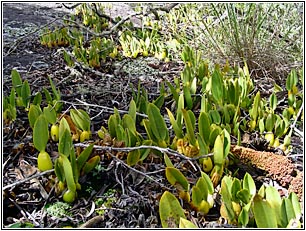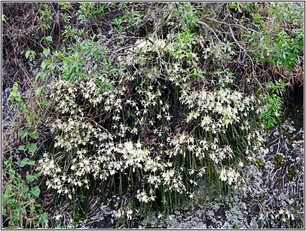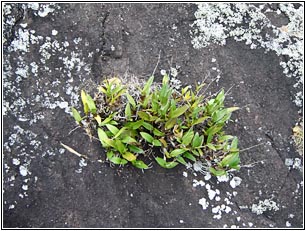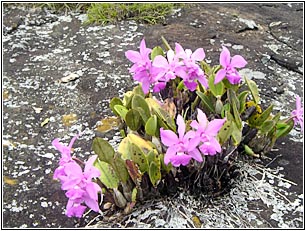
Cattleya walkeriana |
This habitat is located in an ecological reserve, at medium
altitude of 1200 meters, in the state of Minas Gerais. The
climate is divided in two well defined seasons: one is very
dry with cold nights and the other, is very rainy. Besides,
the region, placed in a basin of a river, is in a zone of
transition between the Atlantic Forest and the "Cerrado"
(kind of Brazilian savannah). The last biome predominates
in the areas where the C. walkeriana occurs. There
are also big extensions of rocky outcrops where the vegetation
is typical of rupestrian fields. The Cattleya walkeriana
is, in general, found on the big outcrops, growing at full
sun or just under the protections of few trees. They can also
grow directly on the rock however the most common is find
them over a layer of substrate, turning into big clumps. It
is very rare to see them as epiphyte. Very well adapted to
the drought period, they bear months without rain, having
as unique source of humidity the mist of the winter nights.
|
The
interesting is the fact that almost plants are turn to the north.
The blooming time, normally, occurs at the April's first fortnight
when the most part of the plants bloom.
The number and the size of the flowers vary a lot according to the
roughness of the area where the plants are located. Where the exposition
to the sun lasts more with less humidity, the spikes used to have
only a small flower.
Besides Cattleya walkeriana, Cattleya loddigesii
and Cattleya x dolosa (a natural hybrid between the two
species) can also been found.
C. loddigesii is rare in this specific habitat which can
be explained by the lack of permanent source of humidity but in
the close woods it occurs abundantly. I have just found one plant
on a rock close to a source of water. I think it will incorrectly
to generalize and say that plants of Cattleya loddigesii from
this place are rupicolous because it is an abnormality. On the contrary,
C. x dolosa forms big populations, vegetating under the
some conditions as C. walkeriana, however they are separated.
The plants of Cattleya x dolosa found in the nature have
a vegetative aspect quite different from those we normally see in
cultivation. They are bigger and more vigorous. Their bloom season,
as well as the one of C. loddigesii, lasts for many months,
starting in March and finishing in July.
In spite of seeming to be abundant in this region, it doesn't occur,
since the area is extremely restrict corresponding just a some hectares
of the reserve. So, it is very important to prevent the progression
of the degradation avoiding, in this way the disappearance of those
so exuberant plants.
In the same hill, there are another species but they don't
share the same environment. For example, Oncidium crispum
and Epidendrum sp occur in close areas of C. walkeriana
however they have much more humidity.
|
|
|
|
Oncidium
crispum
|
Epidendrum
sp
|
|
|
|
|
Cattleya
walkeriana
|
Cattleya
walkeriana
|
|
|
|
|
Cattleya
walkeriana during the drought period
|
Cattleya
loddigesii
|
|
|
|
|
Cattleya
x dolosa
|
Cattleya
x dolosa
|
Some species
also vegetate on the rock, some other on the wood or in the field,
but, in general, all of them are
neighboring. The habitats can be divided into:
Rupestrian field:
Bulbophyllum warmingianum and plumosum, Epidendrum
secundum, Pleurothallis johannensis.
Swamp
field (hill top):
Phragmipedium vittatum and Epidendrum dendrobioides.
| |

Epidendrum dendrobioides |
Clean field (Campo limpo):
Cyrtopodium triste
Rocks:
C. walkeriana, C. dolosa, Brassavola tuberculata
(or perrinii), Epidendrum (Lanium) avicula,
Sacoila lanceolata (in the splits), Maxillaria
sp., Cyrtopodium cardiochilum, E. secundum (on
Vellozia), Pleurothallis johannensis.
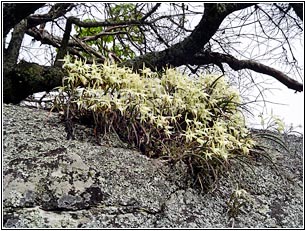 Brassavola
tuberculata
Brassavola
tuberculata |
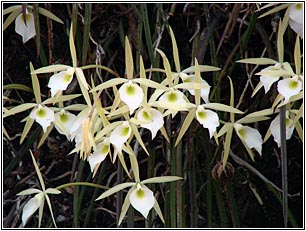 Brassavola
tuberculata
Brassavola
tuberculata |
|
|
|
|
|
|
Brassavola
tuberculata
|
Epidendrum
(Labium)
avicula
|
Rocks
(having water draining during the summer):
Bletia catenulata
and
Habenaria sp.
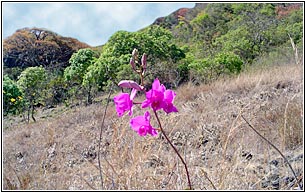
Bletia
catenulata |
 |
|
|
Habenaria sp |
Wood
edge:
Campylocentrum sp, Polystachya sp. Isochilus linearis,
Sophronitis cernua, Epidendrum (Lanium)
avicula, C. walkeriana, B. tuberculata (or
perrinii), Bulbophyllum plumosum, Oncidium
varicosum var. rogersii
Wood Interior:
Oncidium varicosum var rogersii, Oeceoclades
maculata, Pleurothallis sp, Brassavola tuberculata
(perrini).
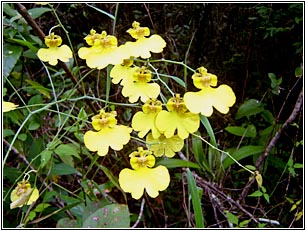 Oncidium
varicosum
Oncidium
varicosum |

Oncidium
varicosum |
Photos:
Guilherme de Paula
(1) Guilherme de Paula Salgado is a 19 years old student
on Environmental Engineering.
SInce long time ago, he has been visiting many habitats, mainly
in the state of Minas Gerais.
|
|

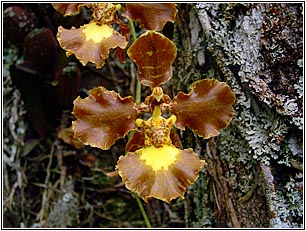
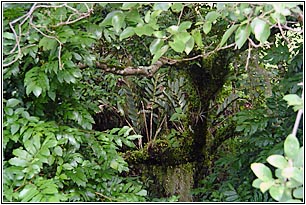
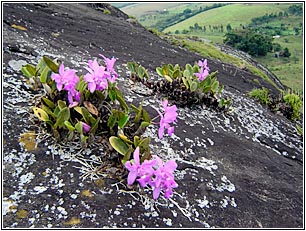
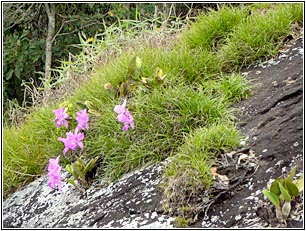
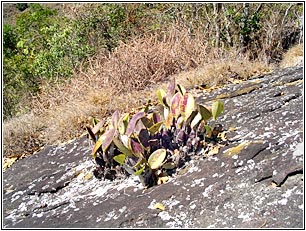
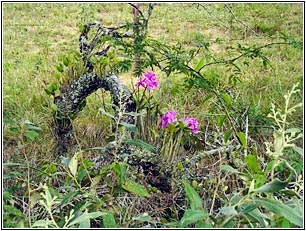
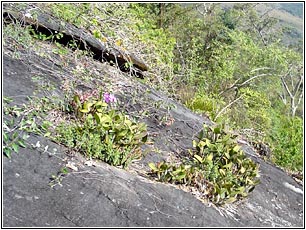
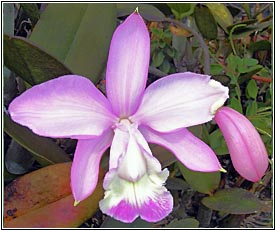
.jpg)
